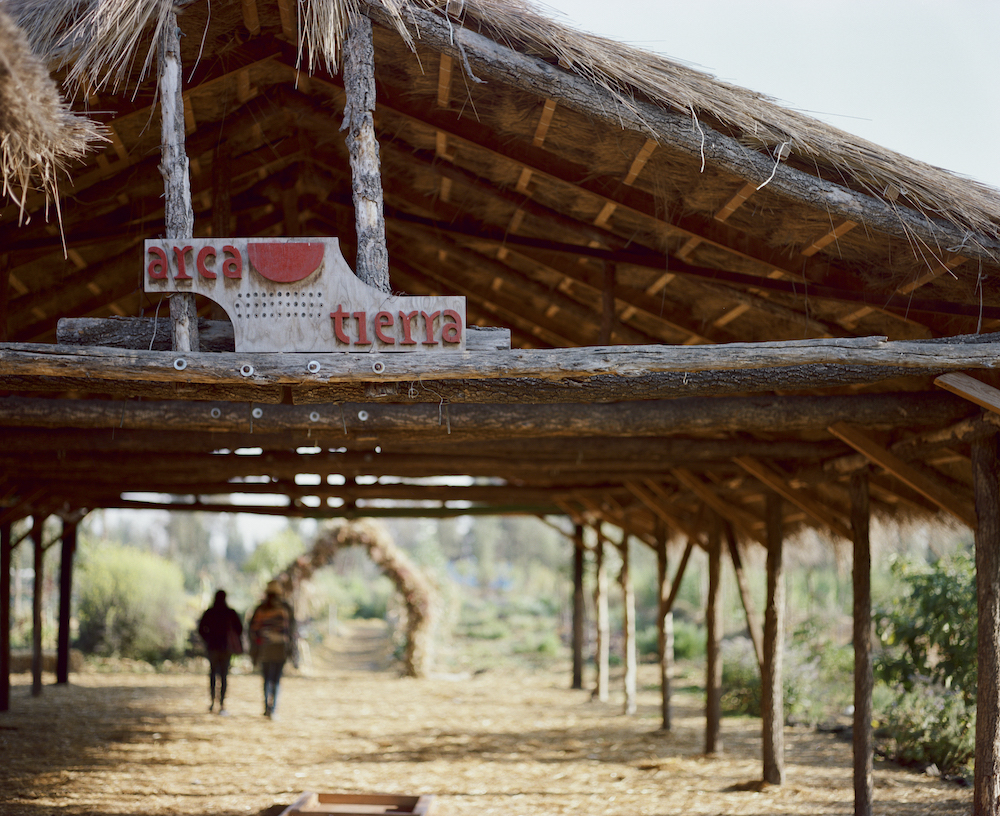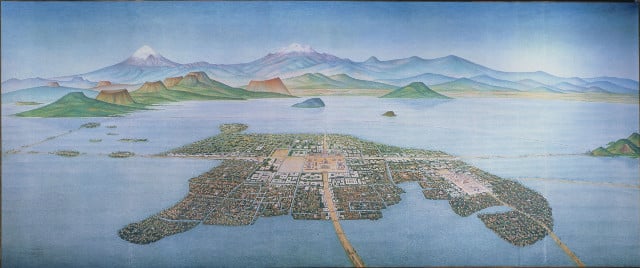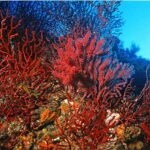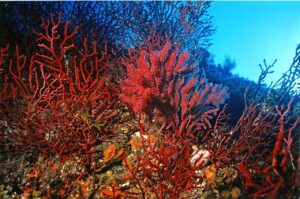On a quiet Monday morning, I took an Uber to meet with Joahna Hernandez, the marketing director of arca tierra, a project rehabilitating chinampas in Xochimilco. As I headed south from the center of Mexico City at 7am, I was surprised that it only took me 30 minutes to reach the famous channeled wetlands.
“Here we sow water and harvest the sun.”
11 percent of Mexico’s biodiversity can be found in Xochimilco, a town that once fed the citizens of Tenochtitlan, the capital of the Aztec Empire that is now Mexico City. Even though you may recognise Xochimilco, you may not be aware of these facts, as Xochimilco is largely known for its coloured trajineras (wooden rafts), where tourists drink cocktails while listening to traditional music while travelling along the last surviving traces of the Texcoco Lake, which once flooded the Anahuac Valley. The history of Xochimilco is a lot deeper than cocktails in plastic cups. The Xochimilca people have lived in the valley for over 1000 years, and were the first of the seven nahuatl tribes to occupy the lake. They expanded through the valley and survived on the lake by developing an agricultural technology known as chinampas.
“The idea behind arca tierra is two-fold: to collaborate with local farmers for the recovery of agricultural production in Mexico City and for the preservation of the ancestral knowledge behind the chinampas. And let me tell you, it is not an easy job when the country is dominated by industrial agribusiness.”
“Lucio Usobiaga, arca tierra’s founder, always says that chinampas are the best example of how human beings can be forces of good and create more life and more biodiversity. We are in a time where we hear a lot of negativity, that humans are the worst thing that has happened to the planet. Here this is not the case. I mean, chinampas are really proof that human intervention can be positive, as long as we stop putting ourselves at the centre of everything. For example, here the centre, the objective, is to generate health from biodiversity.”

“It is said that Xochimilco once fed the city of Tenochtitlan, that numbered over 250,000. Apparently, they used to harvest corn seven times a year. Crazy, right?”
Comparatively, nowadays, industrial agriculture can harvest corn only once a year.
“A chinampa is an agricultural technique that uses the lake bed sediments to create concentrated vegetable gardens along the banks of the wetlands. The word chinampa comes from the Nahuatl chinamitl, which means surrounded by roots. This is because the land is full of organic matter. This is thanks to both endemic trees, like the ahuejotes or the weeping willow, and to the volcanoes that surround it. For over 3,000 years the volcanoes’ meltwater fed this land with minerals and nutrients. The nutrient rich lake bed makes the soil incredibly fertile, which is why the Xochimilcas created the chinampa method to be able to grow several crops and reap many harvests on small plots of lands.”
As we board our trajinera, it slowly makes its way towards a deeper area of the wetlands, and I notice how most of the land has been turned into football fields and few plots remain dedicated to agriculture. Yet as we set foot on arca tierra’s chinampa, the importance of maintaining this ancient technology is obvious: the land is teeming with life, and a multitude of different crops, flowers, and buzzing pollinators greet us.
“Many scientists that have ran soil tests here can never believe the amount of life in the organic matter. This is why germination in a chinampa occurs faster. Here we have at least 50 plants of five different species in one square meter, to take advantage of this incredibly fertile soil.”
Today Xochimilco spans 12,517ha (30,930 acres) out of which less than 1,000ha (2,471 acres) are still dedicated to chinampa agriculture. Joahna explains that several chinamperos have abandoned their lands in search for more lucrative job opportunities in the city. Arca tierra’s objective is to showcase that a chinampa can still provide a thriving and sustainable economic model for the local community.
“Arca tierra is a fully collaborative and experimental place. The idea is that everything we do here can be replicated in other places. And for that reason we have begun a farmer school. We will grant eight scholarships and each student will receive a full education in agroecology, as well as training in gender equality. Once they graduate, the hope is that they either work in a chinampa or rehabilitate their own. This way each student can generate jobs whilst ensuring that the knowledge is preserved. The idea here is that the chinampas become permanent work and not temporary agricultural jobs, demonstrating that farmers can fully support a family.”
Although their main income is selling produce directly to restaurants and stores in the city and running a Community Supported Agricultural (CSA) program, Joahna mentioned several different activities arca tierra is involved in, other than regenerative agriculture. Their chinampa can be rented to host private events, which often take the form of sunrise breakfasts cooked in traditional open fire ovens by local chefs, and they also invite school children once a month to learn about the chinampa method of farming.

“In Xochimilco there are no fruit trees, so we also work with a network of 35 farming families in other communities to provide our customers with fruits too. Our CSA baskets always have the basis of a Mexican diet: onions, tomatoes, chili peppers and garlic. Whilst everything else is seasonal. Through our baskets we also like to introduce people to lost tastes, adding to the baskets varieties that are not normally found on supermarket shelves.”
The homogenisation of food is a global issue, according to the FAO 75 percent of the world’s food is generated from only 12 plants and five animal species, despite having over 20,000 edible plants to choose from.
“Lucio spent this past weekend in his experimental vegetable garden, where he saves seeds and reproduces certain varieties. He always shares his findings with our network of farmers to promote biodiversity.”
This reminds me of the seed saving movement that is growing worldwide. Did you know that over 60 percent of the world’s seeds are controlled by four agrochemical companies? It’s time to take back control of the food system, and thus of our health too. Individual efforts like Lucio’s are therefore imperative to stimulate biodiversity in our now bland diets.
As we made our way back towards the docks, we spotted around 10 different species of migratory birds. Considering our proximity to one of the world’s largest cities, it was an incredible sight.
I asked Joahna if the wetlands are fully natural, the last remnants of the Texcoco lake?
“No. After the Spanish began draining the Texcoco lake and the city became more and more urbanised, the natural water flow was lost and the increased in human activity contaminated what remained of the lake and rivers. The lake was fully drained in the 20th century and the city’s rivers were all piped and covered with cement by 1950. So the water that made it to Xochimilco became very dirty. Eventually, they had the water go through a treatment plant, which is the water you see today.”
Tenochtitlan, the Aztec city the Spanish arrived at, was built on an island surrounded by six lakes and interconnected rivers. The Aztecs managed a complex hydrological system, including a stone levée, that could control the passage of water and minimize flooding. After the conquest, the Spanish destroyed the levée, bringing a series of devastating floods that incentivised the conquistadores to begin draining the lake. In the 1950s the last remaining rivers of the city — Mixcoac, Churubusco, and San Joaquin — were piped and sent underground. Today, they are home to the city’s sewage system.

Arca tierra has ambitious plans: to continue rehabilitating the lost agricultural art of chinampas, to keep feeding Mexico City with regenerative agriculture and healthy produce, and to fully empower the local community to live off their knowledge and their land. Yet their most emblematic feat is perhaps the eventual reintroduction of the axolotl in its natural habitat. The axolotl is an aquatic salamander that can only be found in Xochimilco, it is renowned for its ability to regenerate organs, including its spinal cord, heart, limbs and parts of its brain. Today it is estimated that fewer than 50-100 axolotls exist in the wild (although there are over 1 million in captivity).
“We have biofilters in the channels to clean the swamps and encourage birds to eat the carps that led the axolotls to functional extinction. We hope that through this method we can eventually reintroduce the axolotl to all of the channels and that it can eventually thrive again among the banks of Xochimilco.”
Arca tierra is the axolotl of Mexico City. It’s through projects like this that the city will regenerate its heart and limbs by preserving ancestral knowledge and providing economic opportunities while creating a biodiverse ecosystem. It is a model to study and replicate.

Isabella Cavalletti is a storyteller and co-founded eco-nnect.













